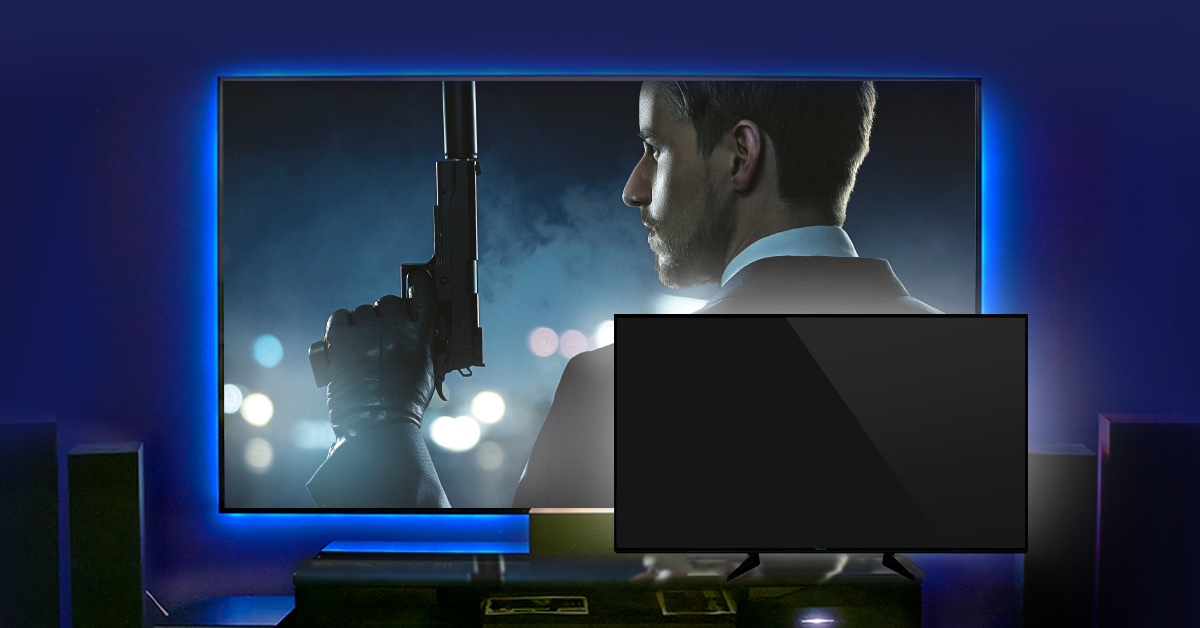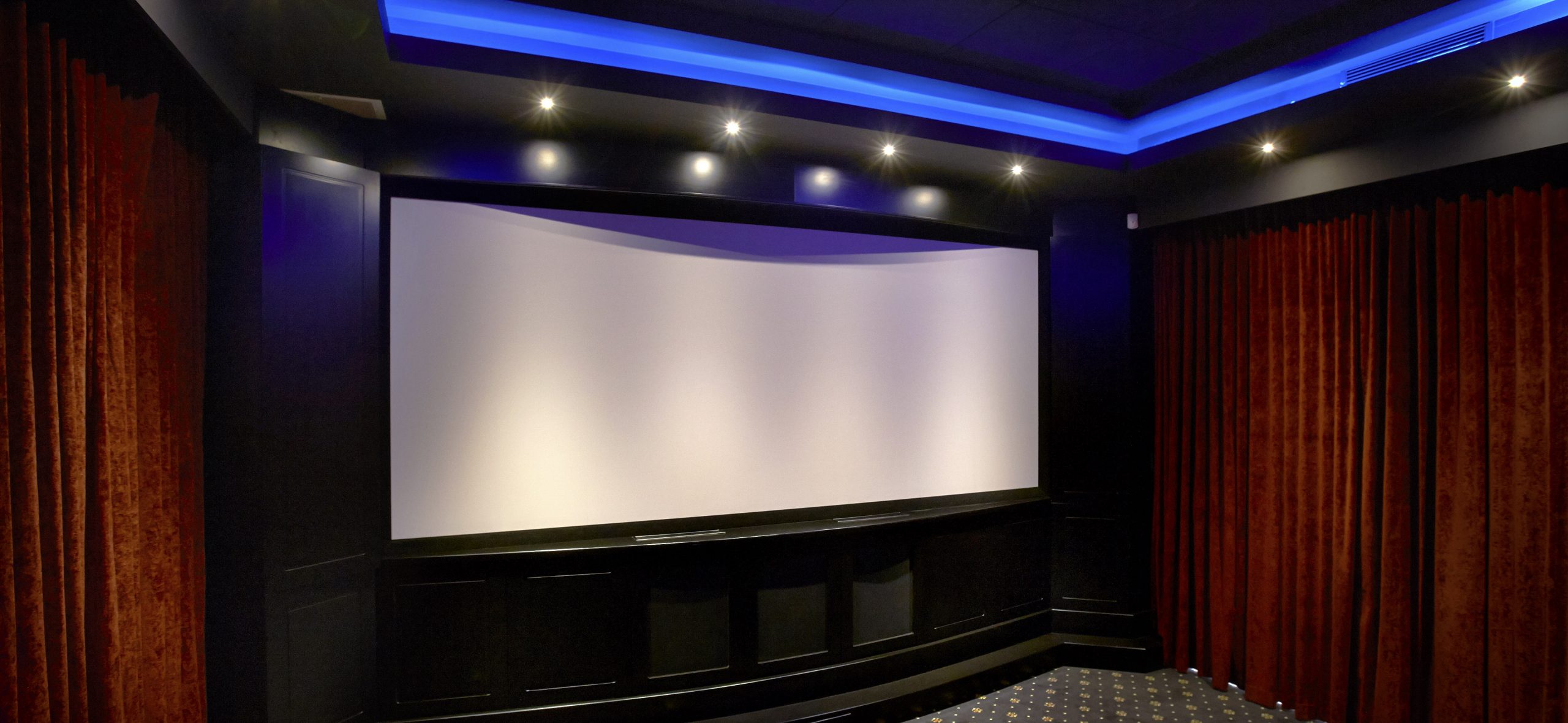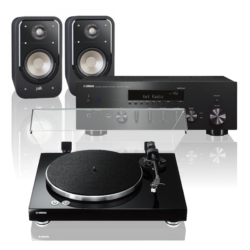Projector or TV?
It’s the age-old question, do I stick with a TV for my home theatre system, or should I really be looking at a projector? The answer, as you might expect, is that it depends on what you’re looking for. Let’s walk you through the options and point out some of the pros and cons along the way.

Talking TVs
There’s no doubt that TVs are a good option for most situations – bedroom, outdoor area, man cave, and for a lot of people, the living room. They work well in all types of lighting and can offer the size and picture quality to enhance any home viewing experience. Smart TV technology is now quite user-friendly and with 4K Ultra HD TVs packing in 3,840 x 2,160 pixels, a TV is all that’s required for most circumstances.
The lowdown on LED LCD vs OLED
LCD TV’s won the battle against plasma and pretty much every TV sold today is based on the LCD (liquid crystal display) that uses an LED backlight, however now LCD is facing a challenge from the newer OLED (organic light emitting diode) with its superior ‘infinite’ contrast ratio.
While OLED has the edge on picture quality and perfect black, LCD TVs have the advantage of larger screens – up to 88’’ (Samsung Q9 – $29,999 RRP) versus OLED’s 77’’ (Panasonic EZ1000 – $29,999 RRP). Which will win out? Only time will tell.
TV has its limits
While big screen TV can be the perfect solution for some, to achieve that true cinematic quality that the home theatre experience demands, you’re going to have to aim at the high end of the market.
Truth is, getting a TV isn’t always a cheap solution for your home theatre. In fact, you’ll likely end up paying more for a 65’’ TV ($1500 to $2500) than you would for a 120’’ projector (around $2000) to achieve the same big screen experience. You should also be aware that even when you do, the TV technology is still maxing out at a 88” screen. Another downside is that when you switch to cinema mode on your TV, the screen will narrow, making the whole image smaller again, so you’re not really getting the true big screen experience you thought you would be.
When it comes to cost, home theatre projectors and screens are less expensive (by cost-per-viewing inch) than televisions. As you price TV’s above 70”, it becomes clear that a projector offers performance at a price that TV’s can’t match.
Bring out the big guns
Big movies deserve a big screen. And nothing beats a 12-foot-wide screen of cinema quality vision at home. If you’re serious about replicating the big screen experience, you really should look closely at the projector options, especially when combined with high quality Dolby Atmos sound.
While TVs have caught up with delivering clear and crisp images, projectors are able to match them – at up to four times the size. As a rule of thumb, for rooms of 3×4 metres or more, only a projector can deliver the true immersion that home theatre is all about.
For larger rooms, some projectors offer ‘cinemascope’ which is the aspect ratio most films are shot in. This will give you that larger than life experience that fills your entire field of view with high resolution imagery, and is guaranteed to take your breath away.
Projecting the future
Many of the old concerns people had about projectors are a thing of the past, but still persist as myths to this day:
Myth 1: I need to have a really big room
It used to be that projectors had to be far away from your screen, but there are long throw and short throw options so this is no longer an issue. Short throw projectors create much larger pictures from short distances, so now you can find a projector that fits even the smallest home theatre
Myth 2: Projectors don’t work in lighter rooms
Projectors have got a lot brighter these days, with some designed specifically to operate in daylight. This is the ideal option for watching sports with friends. There are also special screens that can improve the contrast ratio of the image in a well-lit space.
Check out this video from SONY on how their projectors are overcoming this: https://www.youtube.com/watch?v=FKNJzEqOC2I
Myth 3: Projectors may not be that expensive, until you replace the globe
Globes are an important element of any projector. 10 years ago, the life expectancy of a globe was around 800 hours and it cost about the same in dollars. Today you can expect your globe to last much longer – 3000-5000 hours – and will cost as little as $199 if you ever need to replace it.

Get the picture?
For the big screen, home theatre experience, projectors lend an unmatched scalability and authenticity. However, you need to think carefully about the space you’re planning to use it in, in terms of lighting and room size to make sure you choose the home theatre screen option that is perfect for you.
For the best in tailored advice, ask the team at West Coast Hifi about the best options to suit your needs.
If you’re thinking of investing in a premium model, the stunning 4K Ultra HD Resolution option is certainly worth a second look. And you’ll find the true colour of the High Dynamic Range screens are really bringing Ultra Blu-ray 4K movies, Netflix 4K content and 4K gaming to life.
If you’re looking for a true authentic cinematic experience, purists will insist that a projector is the best choice. If you want to experience the impact and wow factor of a home theatre projector, come and see us in store for a demonstration.
Check out our Home Theatre Packages.
It’s the age-old question, do I stick with a TV for my home theatre system, or should I really be looking at a projector? The answer, as you might expect, is that it depends on what you’re looking for. Let’s walk you through the options and point out some of the pros and cons along the way.

Talking TVs
There’s no doubt that TVs are a good option for most situations – bedroom, outdoor area, man cave, and for a lot of people, the living room. They work well in all types of lighting and can offer the size and picture quality to enhance any home viewing experience. Smart TV technology is now quite user-friendly and with 4K Ultra HD TVs packing in 3,840 x 2,160 pixels, a TV is all that’s required for most circumstances.
The lowdown on LED LCD vs OLED
LCD TV’s won the battle against plasma and pretty much every TV sold today is based on the LCD (liquid crystal display) that uses an LED backlight, however now LCD is facing a challenge from the newer OLED (organic light emitting diode) with its superior ‘infinite’ contrast ratio.
While OLED has the edge on picture quality and perfect black, LCD TVs have the advantage of larger screens – up to 88’’ (Samsung Q9 – $29,999 RRP) versus OLED’s 77’’ (Panasonic EZ1000 – $29,999 RRP). Which will win out? Only time will tell.
TV has its limits
While big screen TV can be the perfect solution for some, to achieve that true cinematic quality that the home theatre experience demands, you’re going to have to aim at the high end of the market.
Truth is, getting a TV isn’t always a cheap solution for your home theatre. In fact, you’ll likely end up paying more for a 65’’ TV ($1500 to $2500) than you would for a 120’’ projector (around $2000) to achieve the same big screen experience. You should also be aware that even when you do, the TV technology is still maxing out at a 88” screen. Another downside is that when you switch to cinema mode on your TV, the screen will narrow, making the whole image smaller again, so you’re not really getting the true big screen experience you thought you would be.
When it comes to cost, home theatre projectors and screens are less expensive (by cost-per-viewing inch) than televisions. As you price TV’s above 70”, it becomes clear that a projector offers performance at a price that TV’s can’t match.
Bring out the big guns
Big movies deserve a big screen. And nothing beats a 12-foot-wide screen of cinema quality vision at home. If you’re serious about replicating the big screen experience, you really should look closely at the projector options, especially when combined with high quality Dolby Atmos sound.
While TVs have caught up with delivering clear and crisp images, projectors are able to match them – at up to four times the size. As a rule of thumb, for rooms of 3×4 metres or more, only a projector can deliver the true immersion that home theatre is all about.
For larger rooms, some projectors offer ‘cinemascope’ which is the aspect ratio most films are shot in. This will give you that larger than life experience that fills your entire field of view with high resolution imagery, and is guaranteed to take your breath away.
Projecting the future
Many of the old concerns people had about projectors are a thing of the past, but still persist as myths to this day:
Myth 1: I need to have a really big room
It used to be that projectors had to be far away from your screen, but there are long throw and short throw options so this is no longer an issue. Short throw projectors create much larger pictures from short distances, so now you can find a projector that fits even the smallest home theatre
Myth 2: Projectors don’t work in lighter rooms
Projectors have got a lot brighter these days, with some designed specifically to operate in daylight. This is the ideal option for watching sports with friends. There are also special screens that can improve the contrast ratio of the image in a well-lit space.
Check out this video from SONY on how their projectors are overcoming this: https://www.youtube.com/watch?v=FKNJzEqOC2I
Myth 3: Projectors may not be that expensive, until you replace the globe
Globes are an important element of any projector. 10 years ago, the life expectancy of a globe was around 800 hours and it cost about the same in dollars. Today you can expect your globe to last much longer – 3000-5000 hours – and will cost as little as $199 if you ever need to replace it.

Get the picture?
For the big screen, home theatre experience, projectors lend an unmatched scalability and authenticity. However, you need to think carefully about the space you’re planning to use it in, in terms of lighting and room size to make sure you choose the home theatre screen option that is perfect for you.
For the best in tailored advice, ask the team at West Coast Hifi about the best options to suit your needs.
If you’re thinking of investing in a premium model, the stunning 4K Ultra HD Resolution option is certainly worth a second look. And you’ll find the true colour of the High Dynamic Range screens are really bringing Ultra Blu-ray 4K movies, Netflix 4K content and 4K gaming to life.
If you’re looking for a true authentic cinematic experience, purists will insist that a projector is the best choice. If you want to experience the impact and wow factor of a home theatre projector, come and see us in store for a demonstration.
Check out our Home Theatre Packages.















